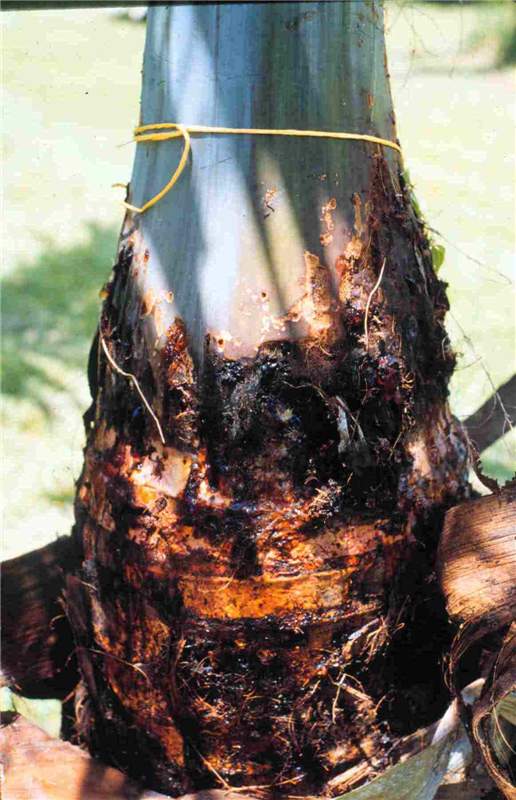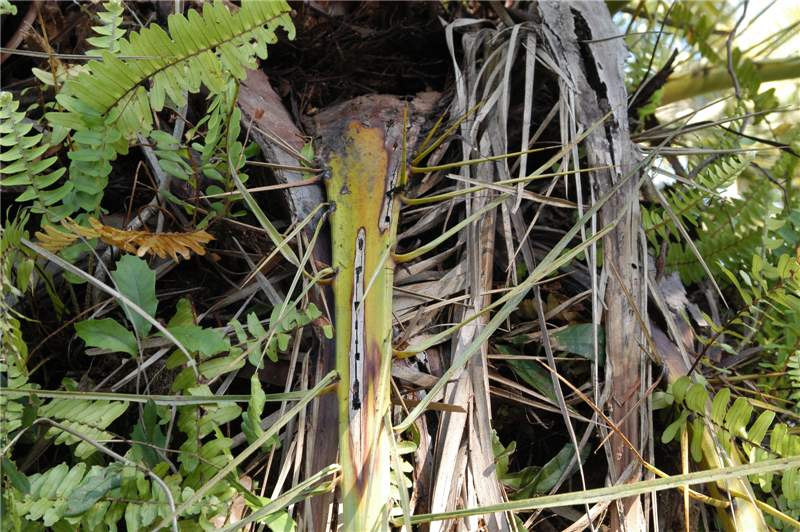Silky Sugar Cane Weevil Damage
|
Figure 2. Feeding damage caused by larvae of Metamasius hemipterus on spindle palm (Hyophorbe verschafeltii). Photo by T.K. Broschat
|
|
Figure 1. Exudate from oviposition holes caused by Metamasius hemipterus in spindle palm (Hyophorbe verschafeltii). Photo by R. Giblin-Davis.
|
|
Figure 4. Phoenix canariensis infested with Metamasius hemipterus. Note older living leaves hanging down against trunk. Photo by T.K. Broschat
|
|
Figure 3. Feeding damage caused by Metamasius hemipterus on spindle palm (Hyophorbe verschafeltii). Photo by R. Giblin-Davis.
|
|
Figure 5. Close-up of leaf base of Phoenix canariensis infested with Metamasius hemipterus. Photo by T.K. Broschat
|
Symptoms
In palms having crownshafts, small holes with gummy exudates are present near the bottom of the leaf bases (Figs. 1 and 2). When the outer leaf is peeled off, the younger leaf bases may be scarred with galleries dug by feeding larvae (Fig. 3). In palms without crownshafts, older living leaves may hang down against the trunk and are easily detached (Fig. 4). Closer examination will reveal small holes near the base of the petiolepetiole:
leaf stem
(Fig. 5). If these leaves are pulled off, small cocoons of wound fibers will often be visible within the chewed up leaf bases.
May be confused with
Damage from Metamasius hemipterus could be confused with that of Rhynchophorus sp. although cocoons of the latter species are much larger than those of Metamasius hemipterus. The two species are often found together within the same palm tissue.
Cause
Damage is caused by feeding of Metamasius hemipterus larvae within the leaf bases.
Occurrence
Metamasius hemipterus is widespread throughout Florida, the West Indies, and Central and South America. In Florida, it is most commonly encountered on Phoenix canariensis and Ravenea rivularis. A related species, M. inaequalis, is a problem on Elaeis guinennsis in Central and South America.







